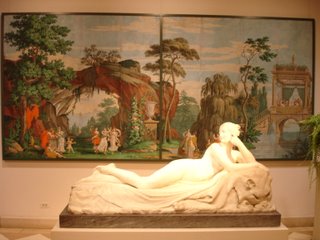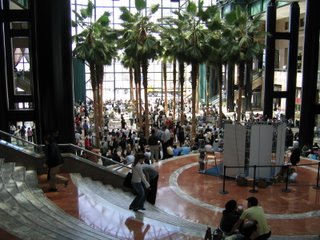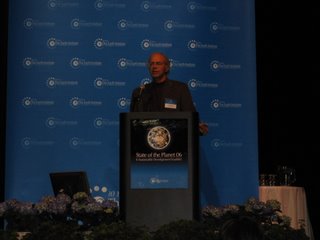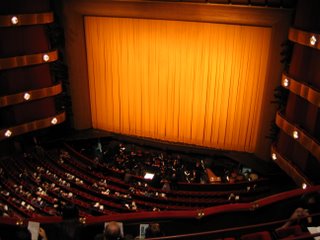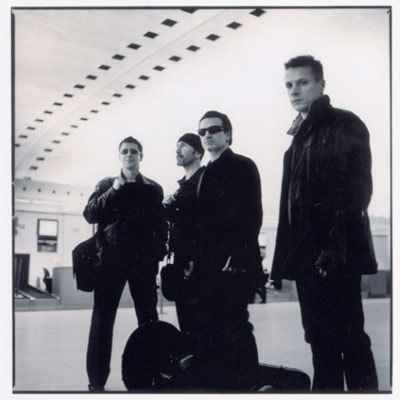
Columbia has been an interesting experience so far. There have been high points, and low points; some ups, and some downs. There have been setbacks, and there have been some fairly serious disappointments. However, one thing that has NOT been a disappointment has been the speakers who have come through here. In some ways, I’d almost say the speakers have been among the highlights. And this week, I had a chance to hear Ravi Zacharias speak. And it was extraordinary.Ravi, for those who may not know, could best be described as a Christian apologist and philosopher & thinker. He’s spoken around the world at places like Oxford & Harvard, and has written a number of books, including “Jesus Among Other Gods”, which compares the claims of Christianity with Islam, Hinduism, & Buddhism. He’s a powerful speaker and has an extraordinary mind; I haven’t been so impressed with a thinker since C.S. Lewis, and believe me, that’s saying something. He’s known for being thoughtful, brilliant, and for doing Q&A sessions at the end of his talks in which he pretty much takes all comers. Additionally I think it is significant that he isn’t white; he’s from India originally, which gives him (in my opinion) an especially valid platform to do analytic comparisons with Eastern & Western religious traditions. He has also been able to draw out some very powerful insights from the Gospels that would not be obvious to Western minds.
The first night here, he spoke on God and suffering, and the second on his topic Jesus among the Gods. I was late to the second night and only got to hear the second half of his speech, but I had front row seats to the first night and wasn’t disappointed. A great speaker, fantastic orator, excellent diction, and did a very effective job of balancing appeals to the head and engaging one’s feelings on a matter. I’ll include here a few of the things he pointed out during his first talk that were illuminating to me:
-) That ‘evil’ is not just a problem it is a mystery. A mystery is such that a problem encroaches back around on itself and the questioner eventually becomes the object of the question. None of us can ask about ‘evil’ without both the question and the answer involving ourselves. [As a further illustration, he put it this way: Getting to Mars is a problem. Falling in love is a mystery.]
-) No worldview poses an answer to this problem without smuggling in, implicitly or explicitly, and answer to the purpose & meaning of life. Any worldview must encompass four things: origin, meaning, morality, and destiny. [Where did I come from, why am I here, how should I behave, where am I going?]
-) The statement, ‘There is no such thing as truth’ is meaningless because the statement itself purports to be a true statement which it cannot be by its own definition. In the same way, without some sort of framework, one cannot even talk about ‘evil’, for how does one define what is evil? In simple terms, if ‘evil’ is defined by people or by groups of people, then no one is in a position to criticize ethnic cleansing when it is done by the majority; in other words, we have morality by vote. If evil is absolute, if some things are always evil everywhere, then one must appeal to a super-human standard. Such a standard only makes sense if there is a God. Ravi went a step further to say that since moral truth and absolutes do exist, therefore so must God. I’d personally always felt this was where the analysis comes out, but it was refreshing to hear it confirmed by someone who is much smarter than I, and has spent more time thinking about it. -) He said that if love is the supreme ethic, which he believes it is, then the freedom to reject love is systemic, i.e., it must be a part of the system or the framework.
-) And he said that if the object of one’s love is forced, i.e., if love is not a choice, then the lover suddenly finds themselves alone.
It was a great evening, and I had a chance afterwards to go and have him sign a book for me, and get a picture with him. I would consider him to be perhaps the greatest apologist alive today, and would highly recommend him to anyone who wished to see him. He’s well worth the time.
 Hurrah, at long last! I finally have the pictures from my spring break a few weeks back (actually several weeks back, now that I look at it), and here are the posts that go with them. Bear in mind that I actually wrote these posts back at that time, and was just waiting on the pictures. So if the timing seems a bit off in the posts, that's why.
Hurrah, at long last! I finally have the pictures from my spring break a few weeks back (actually several weeks back, now that I look at it), and here are the posts that go with them. Bear in mind that I actually wrote these posts back at that time, and was just waiting on the pictures. So if the timing seems a bit off in the posts, that's why. 
